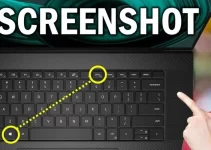Computers are remarkable machines that can perform a variety of tasks. But Which three parts of the computer receive input? How does the computer receive the user’s input? Understanding Computer Input and Output.
In this article, we will examine these three questions in depth. Read on to learn more about computer input and output.
Which Three Parts of the Computer Receive Input?
Which three computer components receive input? The keyboard, mouse, and monitor are the three input-receiving components of a computer.
You can interact with your computer by typing words or images on the keyboard and clicking on objects on display with the mouse.
In addition, monitors typically include buttons for turning features ON and OFF and adjusting settings such as colour or resolution. Three Components of the Computer Received Input are:
1. Keyboard
2. Mouse/Mice
3. Monitor
1- Keyboard

Anyone who spends a significant amount of time using a computer must have a keyboard because the computer requires input.
It allows you to quickly and easily input text, numbers, and other commands. A quality keyboard should have a responsive key-switching layout that guarantees accurate keystrokes every time.
Furthermore, it should be comfortable, as prolonged typing can cause wrist pain or Saint’s syndrome.
There are full-size keyboards that can be attached or detached from your laptop and slim laptops with no separate keyboard.
The optimal choice will depend on how frequently you intend to use your computer and the type of typist you are. If space is not an issue, a full-size keyboard may be more suitable for you than a slim one, which occupies less space.
Types of keyboards
- Mechanical Keyboard
- Electronic Keyboard
- And membrane keyboards
Mechanical Keyboard
The earliest type of keyboard is a mechanical keyboard, which uses physical switches that must be depressed to input text or commands. They are frequently heavier and more challenging to use than other keyboards. since they call for more exact finger movements.
Electronic Keyboard
In most cases, electronic keyboards have a number pad on the left side and a built-in computer chip that analyses your typing patterns. Because you don’t have to search around for letters while texting or writing emails, this type of keyboard is more straightforward. However, mechanical key switches are shorter.
Membrane Keyboard
Membrane keyboards use thin silicone strips layered on top of a standard keyboard layout. These strips slightly expand when they become wet, as when you perspire, making them function like key switches that activate various characters depending on where your fingers touch them.
Read Also: How To Charge a Laptop With HDMI
Read Also: How Many Keys Are on A Computer Keyboard
Read Also: How to Speed Up Keyboard Without Any Difficulty
Read Also: Are Keyboard Covers Good for Your Laptop
2- Mouse

A mouse is a tool for navigating the screen and selecting items for input or output by clicking on them. Users can highlight text, drag and drop objects, and navigate menus and programmes by pointing and clicking on the screen.
A good mouse also has tracking capabilities that make it simple to move the cursor around the screen without losing it.
Types of Mouse
- Mechanical mouse
- Wired Mouse
- Optical Mouse
- Laser Mouse
- membrane keyboards
- Gaming Mouse
- Trackball Mouse
- Stylus Mouse
- Presentation Mouse
- Wireless Mouse
Mechanical Mouse
In the past, we utilised the mechanical mouse, one of the most extensively used mice in computing history. This mouse is also known as a ball mouse because it detects motion using a rubber ball that rotates as the mouse is moved and sensors that determine the mouse’s direction.
Wired Mouse
On a display screen, the pointer or cursor is moved using a mouse. A mouse-sized, hard object can roll across a flat surface. The name “scurry” is derived from players moving along a floor while following a mouse-shaped wire. When you move the mouse, the pointer will move accordingly.
Optical Mouse
Today there are mice everywhere, and they are what sustains Joe. Unlike a rubber ball and mechanical sensors, an optical mouse utilises an LED, which detects changes in reflected light and movement.
There are no washable delicious rubber balls. Even though the optical mouse’s physical stability is compromised by the use of light to track activity, the mouse’s buttons and scroll wheel are still mechanical and susceptible to wear.
Laser Mouse
The laser mouse is an optical mouse whose operation is similar to other optical mice: to detect movement through light reflection. Despite its name, a laser mouse utilises an LED rather than a laser beam. The mouse’s distinct soft qualities may be used primarily on glass and plastic surfaces, albeit ineffectively.
Gaming Mouse
A standard mouse has three buttons, whereas a gaming mouse has multiple switches and is precise. These additional buttons can be programmed to perform various functions, particularly for gaming purposes.
Scheduling keys that are useful for non-gaming purposes as well. For instance, they can be used as forward and backward buttons for web browsing or video playback.
Trackball Mouse
Trackball mice are similar to inverted ball mouse. It detects movement by rotating the ball with the thumb or palms of the hand instead of turning the cursor.
Although the trackball mouse has a drastically different design, it functions similarly to the ball mouse. Typically, the ball is made of thick glass or plastic, is smooth, and does not absorb dirt like gluing rubber. A one-handed trackball controller also functions as a remote control rather than a controller.
Stylus Mouse
It’s a cross between two mice, “mutation cursor.” The mouse style favored by digital artists resembles a thick paintbrush, typically used for freehand machine drawing. Some high-end mice are also susceptible to the impact of paper brush strokes.
Presentation Mouse
In the past, we were required to carry a separate laser pointer, mouse, and another person to operate the mouse during presentations. We must always yell “next slide” before anyone can click the mouse. Adding a laser pointer and a mouse was deemed a good idea by some astute singers, which is the result.
Wireless Mouse
Instead of “typical” wires, the wireless mouse connects to the computer unit via radio frequency. This applies to the mouse without cord stitching.
The equation has two components: When the mouse is moved and clicked, it transmits wireless signals as the transmitter. The machine receives these wireless signals and responds accordingly.
Wireless Signals is not a universal term. Some wireless mice are Bluetooth standard, others are wireless 2.4 GHz, and others have their wireless USB dongle.
Read Also: How to Use Laptop HDMI IN Port
Read Also: How to Use a Mouse and a Keyboard with an XBOX
3. Monitor

A computer monitor is an electronic device that displays video images as input on a screen. Monitors are available in various sizes, with prices beginning at $40. Older monitors employ cathode ray tubes (CRT), whereas newer models typically feature LED-backlit LCDs.
Many computers also include VGA or DVI ports for connecting external monitors, enabling simultaneous viewing of multiple documents or images. A good rule of thumb for the workplace is to have one primary monitor. And a third for playing video games and watching movies.
Types of Monitors
- OLED Monitor
- LCD monitor
- LED Monitor
- Plasma Monitor
- CTR Monitor
OLED Monitor
OLED is an abbreviation for “Organic Light Emitting Diode.” As its name implies, organic material (such as carbon, plastic, wood, and polymers) converts electric current into light.
This is the most recent display technology utilised in television, computer, game console, PDAs, and even the most recent smartphones. It can be thinner or lighter than LCDs and have a higher contrast ratio.
Since these LEDs can produce a wide range of colors, they can be used directly to make the desired colour without needing a backlight, saving energy and occupying less space. The OLED display is regarded as excellent for viewing movies.
Due to their wide viewing angles, picture quality, exceptional contrast levels, absence of ghosting, quick response, and perfect contrast and brightness, OLED monitors are regarded as the best display technology ever.
Additionally, it would help if you safeguarded the monitor from water, as it can damage the OLED display. The other disadvantages of the OLED monitor are its shorter life expectancy than LCDs and LEDs and its high market price.
LCD Monitor
LCD is the acronym for ‘Liquid Crystal Display,’ a display made of liquid crystals. It is the most popular monitor in the world because it requires less space, consumes less electricity, and generates less heat than older CRT monitors.
LCD monitors are significantly smaller and lighter than CRT monitors. As a result, it competes in the market with LED and OLED.
This display was initially used in laptops but is now available in sizes ranging from 17 to 60 inches for desktop computers. Transporting and relocating these monitors is uncomplicated because they require little space and are lightweight.
LED Monitor
LED, whose full name is Light Emitting Diode, is the most recent technological advancement on the market today, competing with LCDs and Plasma Monitors. These monitors are slightly curved or flat panel displays that use light-emitting diodes (LEDs) for screen backlighting instead of cold cathode fluorescent (CCFL).
LED displays with 4k resolution are brighter than other displays, allowing the user to read or see clearly during the day. LED monitors consume less power than LCDs, and gamers widely use LEDs to play high-definition and graphically intensive games.
LEDs have the advantage of producing images with more excellent contrast and more vibrant colors, as well as having no negative impact on the environment during disposal. Additionally, LEDs are more resilient than LCD and CRT monitors.
The wavelength range of used light is such that it provides high-quality illumination. The flicker-free display provided by these LEDs reduces eye strain, fatigue, and headaches.
These monitors have a long life expectancy, consume less power, are thinner, have more excellent contrast and more vibrant colors, and have less impact on the environment than LCDs.
Plasma Monitor
The Plasma monitor panel (PDP) is constructed using Plasma technology, another cutting-edge type of computer monitor. An exhibit of plasma derived from cells. These cells are filled with “ionized, electrically charged gas.” These cells are known as plasma.
Its invention is based on the premise that it illuminates the tiny fluorescent lights that create image pixels. Each pixel comprises three fluorescent lights, resembling a miniature neon light: red, green, and blue. This produces a superior contrast ratio, and these lights’ intensity varies proportionally.
In addition to their slimness, plasma displays are flat rather than slightly curved, as with LCDs. It reduces image distortion and glare with its flawless flat screens.
Compared to LCDs, plasma displays have a superior response time, performance, and a much wider viewing angle. Plasma displays as large as 60 inches are considered the best home theatre and HD television.
CRT Monitor
CRT stands for “Cathode Ray Tube” Its primary component is the Cathode Ray tube, also known as the “Generally Picture tube.” A few decades ago, the CRT monitor was used on desktop computers and for watching television.
CRT monitors are significantly heavier than LCD and LED monitors. Due to their weight, they are difficult to move and transport from one location to another. Additionally, they require more installation space.
To survive the transition to the digital world of widescreen television of LEDs or LCDs, display manufacturers converted their production lines from CRT 4:3 displays to LCD 16:9 widescreen displays.
Since they were more prevalent a few decades ago, it is still possible to find a used CRT monitor on the market.
Read Also: How Much Weight PC Game Monitor
Read Also: How Much Weight Monitor Game
Read Also: How Much Does a Computer Monitor Weigh
FAQs :Which Three Parts of the Computer Receive Input
What is input/output and what do computers have to do with it?
Input/output is the data exchange between a computer and its surrounding environment. It entails reading data from a device like a keyboard or a disc and writing data to a device like a printer.
How do I regulate the output my computer sends to the outside world?
You can use a software tool, such as “System Preferences” in macOS or “Monitor” in Windows, to manage the amount of output your computer broadcasts to the outside world.
Where Does Typical Computer Input Typically Originate?
Typically, the output is generated by the keyboard and mouse. Pointing devices can also provide input, such as a trackball, touchpad, or image-to-text scanners.
What are some common uses for computer input devices?
Keyboards, mice, touch screens, and microphones are standard input devices used in computers.
Last Words
Input and output are essential for a computer system’s correct operation. In this blog, we have examined input and output from various angles. By reading this manual, you will be better equipped to comprehend how your computer operates and how to input data appropriately.





